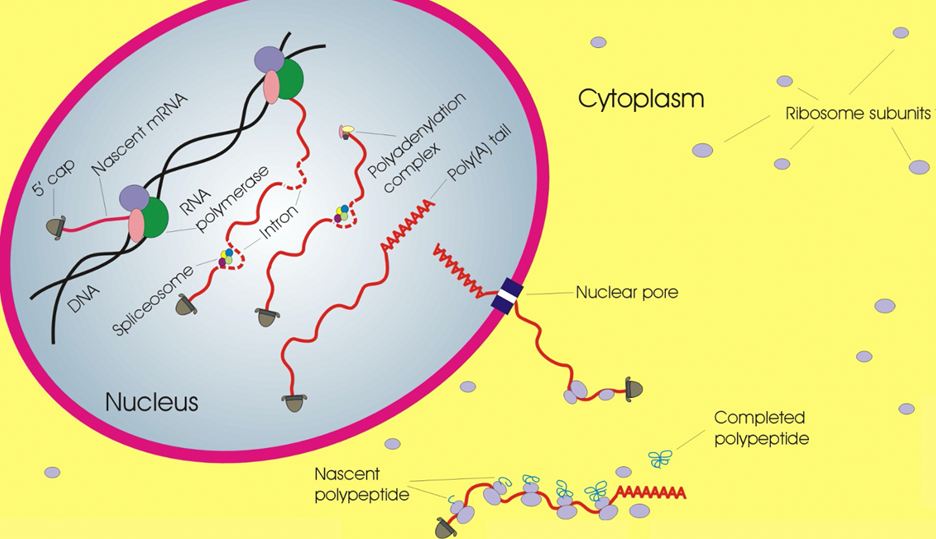Genetic Mechanisms and Therapies
Genetics 101
Genetics is the study of genes, how they work, how they are regulated, and what their products do, as well as understanding the consequences when genes acquire deleterious mutations. We are studying basic genetic processes and using genetics to treat diseases that result from mutations.
The figure below depicts the major steps required for a gene to function.
The first steps occur in the nucleus, where genes are encoded in DNA. The DNA must first be transcribed by the enzyme RNA polymerase into an RNA molecule called the messenger RNA precursor (pre-mRNA). The pre-mRNA has the same sequence as the DNA with the substitution of uracil (U) for thymine (T). A 5’ CAP is attached to the beginning of the pre-mRNA and a poly(A) tail is added to its end.
The pre-RNA is then processed by the spliceosome, a cluster of proteins that remove the introns (intervening sequences) from the pre-mRNA and splice exons (coding sequences) together to produce the mature mRNA. The mRNA is then transported out of the nucleus and into the cytoplasm.
Once in the cytoplasm, the mRNA is usually translated into protein. Other RNAs serve as structural components, regulatory factors that control gene expression, and even as parts of enzymes. Protein synthesis is carried out by a molecular machine called the ribosome. The ribosome subunits assemble on the mRNA, read the genetic code contained in the mRNA, and polymerize the appropriate amino acids in the sequence dictated by the mRNA to produce a completed polypeptide (protein).
The proteins, and some RNAs that do not encode proteins, are the functional components of genes. The proteins and RNA can act as enzymes needed to produce energy or build other cellular components, or the proteins can themselves be structural components of cells.

Gene Therapy
We are using our understanding of the underlying genetic mechanisms to develop appropriate genetic therapies to correct the defect that would otherwise lead to disease. Genetic therapies can be designed that correct gene expression problems or correct a defective gene by adding a normal copy of the gene. In Microbiology, we are developing a better understanding of the basic genetic mechanisms that are altered and result in disease.